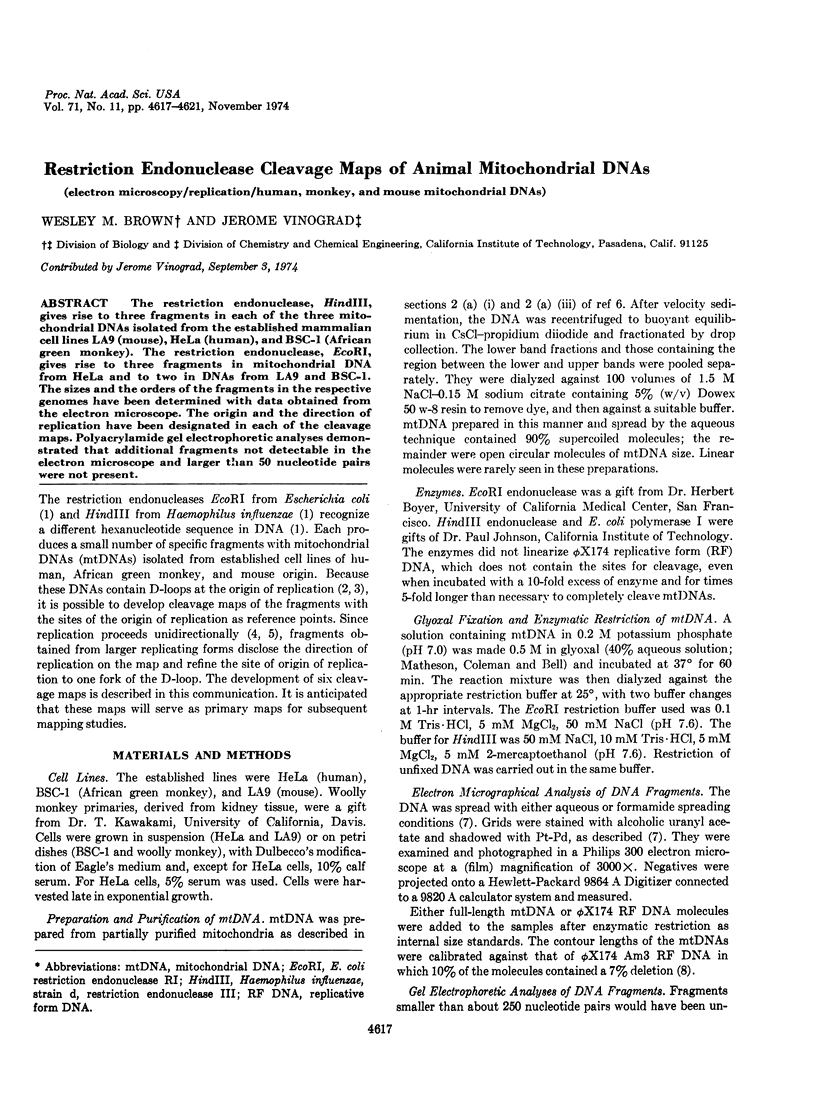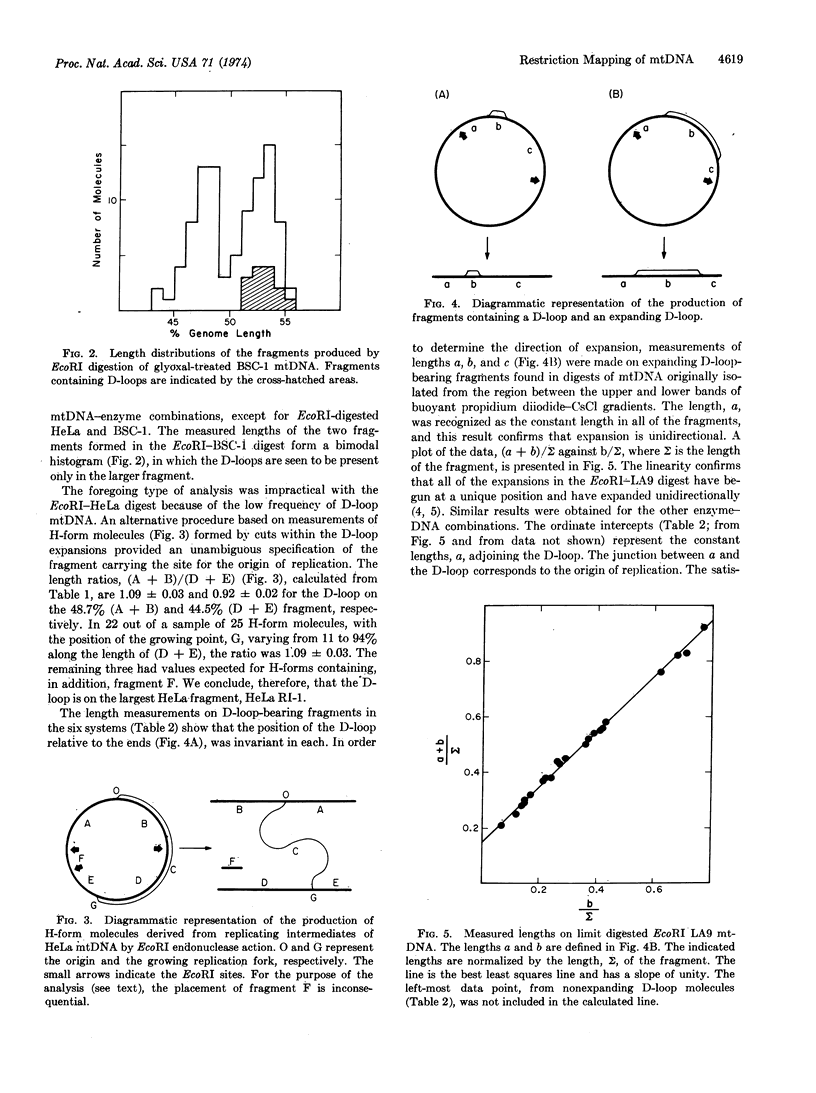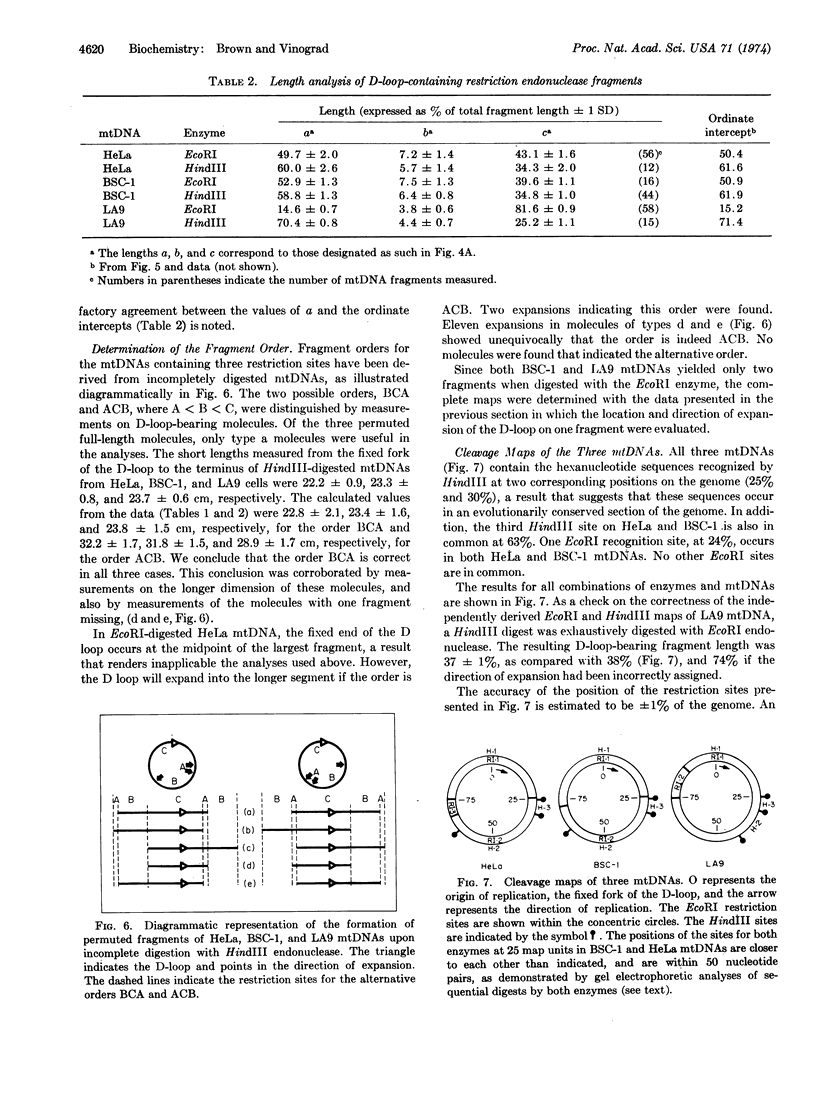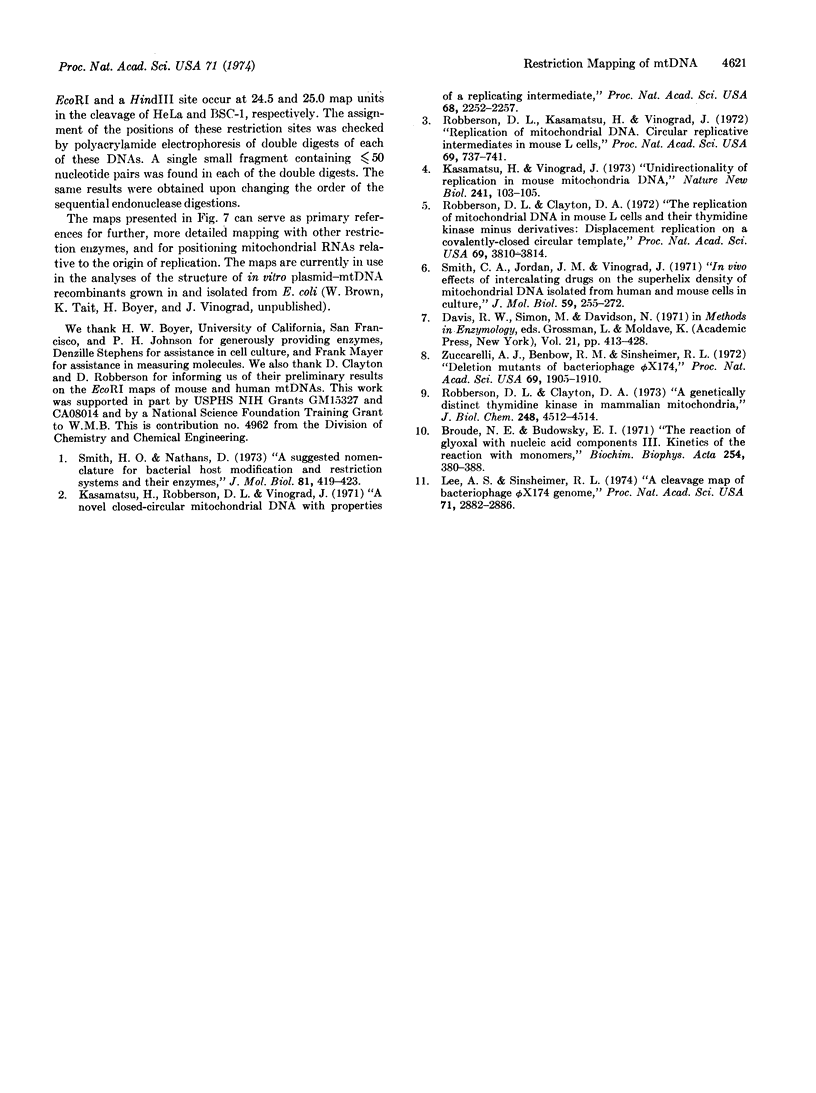Abstract
The restriction endonuclease, HindIII, gives rise to three fragments in each of the three mitochondrial DNAs isolated from the established mammalian cell lines LA9 (mouse), HeLa (human), and BSC-1 (African green monkey). The restriction endonuclease, EcoRI, gives rise to three fragments in mitochondrial DNA from HeLa and to two in DNAs from LA9 and BSC-1. The sizes and the orders of the fragments in the respective genomes have been determined with data obtained from the electron microscope. The origin and the direction of replication have been designated in each of the cleavage maps. Polyacrylamide gel electrophoretic analyses demonstrated that additional fragments not detectable in the electron microscope and larger than 50 nucleotide pairs were not present.
Keywords: electron microscopy; replication; human, monkey, and mouse mitochondrial DNAs
Full text
PDF




Selected References
These references are in PubMed. This may not be the complete list of references from this article.
- Broude N. E., Budowsky E. I. The reaction of glyoxal with nucleic acid components. 3. Kinetics of the reaction with monomers. Biochim Biophys Acta. 1971 Dec 30;254(3):380–388. doi: 10.1016/0005-2787(71)90868-9. [DOI] [PubMed] [Google Scholar]
- Kasamatsu H., Robberson D. L., Vinograd J. A novel closed-circular mitochondrial DNA with properties of a replicating intermediate. Proc Natl Acad Sci U S A. 1971 Sep;68(9):2252–2257. doi: 10.1073/pnas.68.9.2252. [DOI] [PMC free article] [PubMed] [Google Scholar]
- Kasamatsu H., Vinograd J. Unidirectionality of replication in mouse mitochondrial DNA. Nat New Biol. 1973 Jan 24;241(108):103–105. doi: 10.1038/newbio241103a0. [DOI] [PubMed] [Google Scholar]
- Lee A. S., Sinsheimer R. L. A cleavage map of bacteriophage phiX174 genome. Proc Natl Acad Sci U S A. 1974 Jul;71(7):2882–2886. doi: 10.1073/pnas.71.7.2882. [DOI] [PMC free article] [PubMed] [Google Scholar]
- Robberson D. L., Clayton D. A. Pulse-labeled components in the replication of mitochondrial deoxyribonucleic acid. J Biol Chem. 1973 Jun 25;248(12):4512–4514. [PubMed] [Google Scholar]
- Robberson D. L., Clayton D. A. Replication of mitochondrial DNA in mouse L cells and their thymidine kinase - derivatives: displacement replication on a covalently-closed circular template. Proc Natl Acad Sci U S A. 1972 Dec;69(12):3810–3814. doi: 10.1073/pnas.69.12.3810. [DOI] [PMC free article] [PubMed] [Google Scholar]
- Robberson D. L., Kasamatsu H., Vinograd J. Replication of mitochondrial DNA. Circular replicative intermediates in mouse L cells. Proc Natl Acad Sci U S A. 1972 Mar;69(3):737–741. doi: 10.1073/pnas.69.3.737. [DOI] [PMC free article] [PubMed] [Google Scholar]
- Smith C. A., Jordan J. M., Vinograd J. In vivo effects of intercalating drugs on the superhelix density of mitochondrial DNA isolated from human and mouse cells in culture. J Mol Biol. 1971 Jul 28;59(2):255–272. doi: 10.1016/0022-2836(71)90050-7. [DOI] [PubMed] [Google Scholar]
- Smith H. O., Nathans D. Letter: A suggested nomenclature for bacterial host modification and restriction systems and their enzymes. J Mol Biol. 1973 Dec 15;81(3):419–423. doi: 10.1016/0022-2836(73)90152-6. [DOI] [PubMed] [Google Scholar]
- Zuccarelli A. J., Benbow R. M., Sinsheimer R. L. Deletion mutants of bacteriophage phiX174. Proc Natl Acad Sci U S A. 1972 Jul;69(7):1905–1910. doi: 10.1073/pnas.69.7.1905. [DOI] [PMC free article] [PubMed] [Google Scholar]


